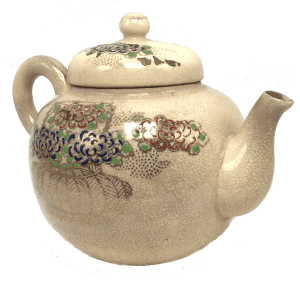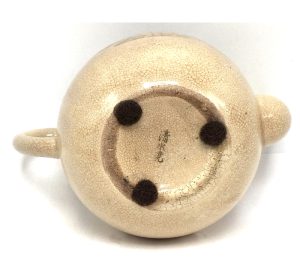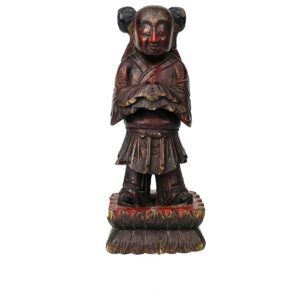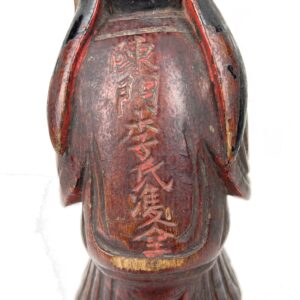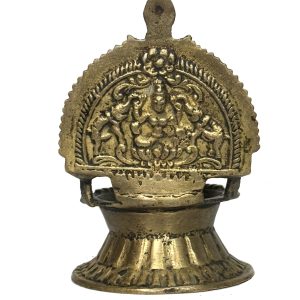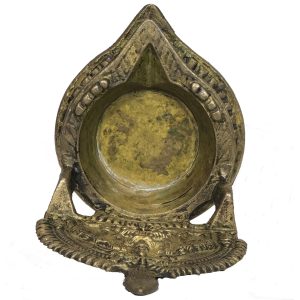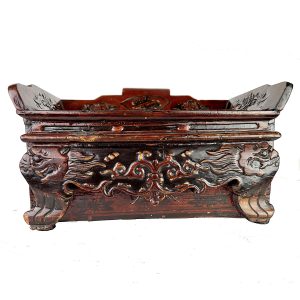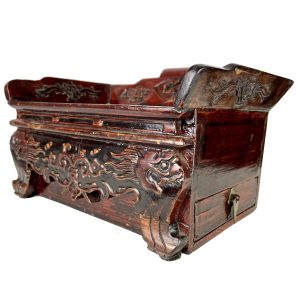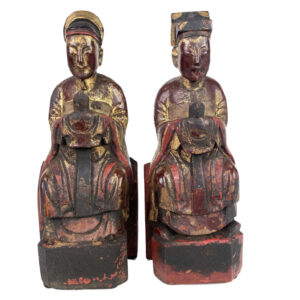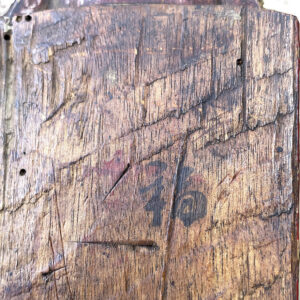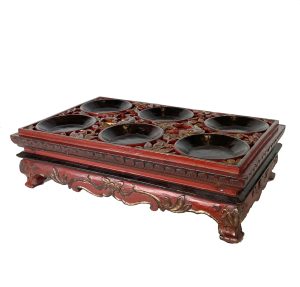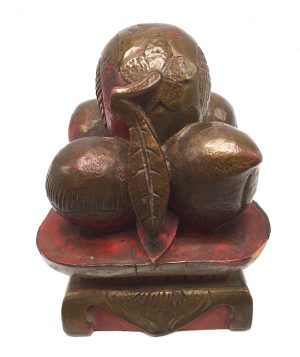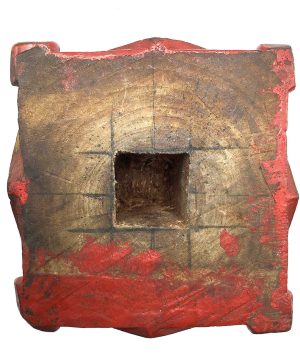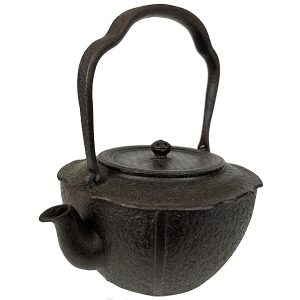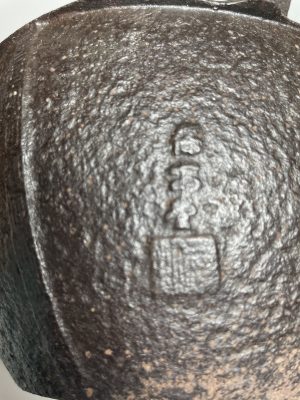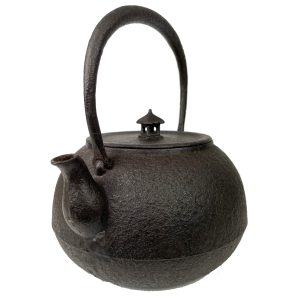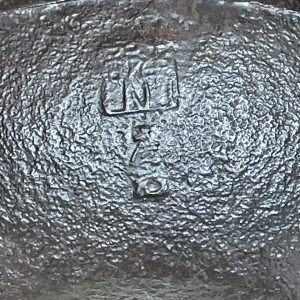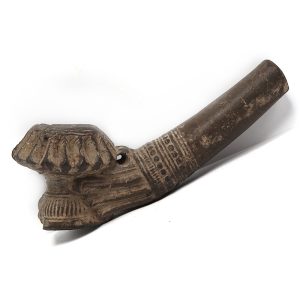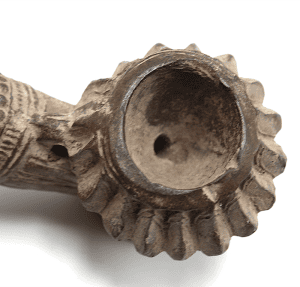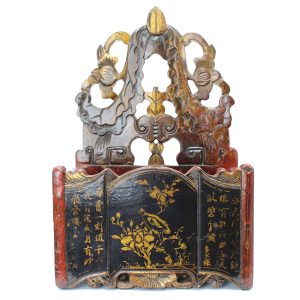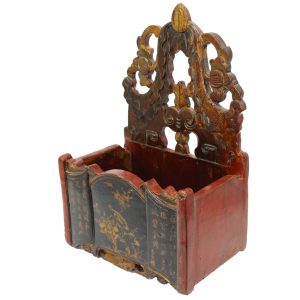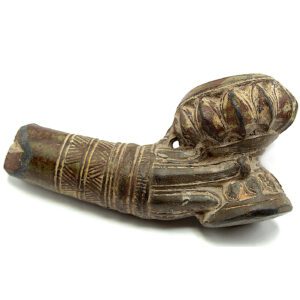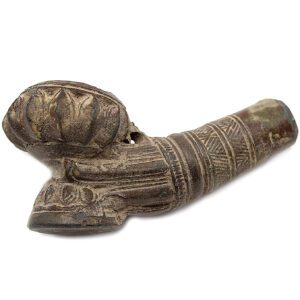Showing 1–12 of 41 results
-
Sale!


$285.00 Original price was: $285.00.$225.00Current price is: $225.00.
H: 4” W: 5.25” D: 3.5” | FREE SHIPPING WITHIN CONTINENTAL U.S.
Hand thrown and -painted Meiji single serving Kyo Ware teapot with luminescent crackled glaze and kiln seal. A chrysanthemum in a basket symbolizes longevity and rejuvenation. Kyo ware is limited, making it collected worldwide.
-
Sale!


$485.00 Original price was: $485.00.$385.00Current price is: $385.00.
H: 7.5″ W: 3″ D: 2.75″ | FREE SHIPPING WITHIN CONTINENTAL U.S.
Sensitive modeling of the face, body and lotus base, its appealing features and graceful garments, make this diminutive statue truly endearing. The rear inscription indicates it was commissioned to celebrate the wedding of a daughter and, as such would make a superb wedding gift.
-
Sale!


$150.00 Original price was: $150.00.$120.00Current price is: $120.00.
H: 5″ W: 3.25″ D:3.875″ | FREE SHIPPING WITHIN CONTINENTAL U.S.
Brass oil lamp front and back Lakshmi on a lotus, elephants showering water bringing life to the land governed by wisdom and purity that leads to material and spiritual prosperity.
-
Sale!


$325.00 Original price was: $325.00.$225.00Current price is: $225.00.
H: 6.375″ W: 10.75″ D: 7.125″ | FREE SHIPPING WITHIN CONTINENTAL U.S.
Charming carved and lacquered multi-use box, opening top and side drawer. Auspicious carved symbols – fu lion heads on front and plum blossoms and fan the front and frame. Painted calligraphic wish for sons. Likely was and still is unique wedding gift .
-
Sale!


$850.00 Original price was: $850.00.$650.00Current price is: $650.00.
H: 7.5″ W: 2.875″ D: 2″ | FREE SHIPPING WITHIN CONTINENTAL U.S.
VA’s most unique and finely crafted Kitchen God couple. Beautifully carved, clasping hu tablets, approachable features, smiling lips. Painted character on base wish for “happiness.” Add positive chi, enhance feng-shui.Unique house warming/wedding gifts.
-
Sale!

$475.00 Original price was: $475.00.$325.00Current price is: $325.00.
H: 5.625″ W: 27.875″ D: 9.75″ | FOR SHIPPING INFORMATION CONTACT US AT 213-568-3030 OR EMAIL [email protected]
This exceptionally crafted and beautiful footed confection mould was most probably a marriage gift from a wealthy family to the newlyweds as seen its symbolisms. It is elaborated and ornately decorated in vibrant reds and gilt with auspicious symbols for fidelity, fertility and happiness with lotuses and pods filled with seeds, bats, paired fish and intertwined vines representing a life pair, having sons, and other marriage wishes.
-
Sale!


$225.00 Original price was: $225.00.$155.00Current price is: $155.00.
H: 4.75 ” Dia: 3.675 ” | FREE SHIPPING WITHIN CONTINENTAL U.S.
This carved food offering was an auspicious bed ornament to bring the lucky couple prosperity, health, a long life and many sons as the pomegranate symbolizes fertility, the peaches longevity. Carved offerings were often wedding gifts.
-
Sale!


$325.00 Original price was: $325.00.$275.00Current price is: $275.00.
Ht: 8.625” W: 7.5” D: 6.5” | CALL 213-568-3030 OR EMAIL [email protected] FOR SHIPPING COST
The hand crafted Tetsubin teapot displays simple yet elegant design: a scalloped top, gently curved handle, and short rounded spout, textured surface. The body is divided in 4 quadrants with meander border designs and the lid is has tiny diamond shaped indentations and is topped with a lotus shaped knob. A raised manufacturers seal on the back. Like all old Tetsubin cast iron kettles, it has rust on the bottom which can be removed by boiling green tea inside it, and is thus for display purposes only.
-
Sale!


$295.00 Original price was: $295.00.$245.00Current price is: $245.00.
Ht: 9.25″ W: 8″ D: 7.25″ | CALL 213-568-3030 OR EMAIL [email protected] FOR SHIPPING COST
Meiji hand crafted cast iron Tetsubin, simple yet elegant textured surface, unique shape top temple ornamental knob. Manufacturer’s seals on side. Perfect tea lovers gift, it is recommended for display only to enhance any kitchen.
-
Sale!


$90.00 Original price was: $90.00.$80.00Current price is: $80.00.
H: 1.875” W: 1.75” D: 4” | FREE SHIPPING within continental us.
Mold made with intricate designs, clay earthen ware tobacco/opium pipes were woven into Burmese and Thai Hill Tribe social and cultural traditions. This is a unique gift a pipe smoker, although for decorative purposes only.
-
Sale!


$350.00 Original price was: $350.00.$295.00Current price is: $295.00.
H: 10.75″ W: 7″ D: 4.5″ | CALL 213-568-3030 OR EMAIL [email protected] FOR SHIPPING.
The auspicious symbols on this charming document holder which are puns for “harmony and unity in marriage” indicate it was it was probably a wedding gift. And would serve that purpose admirably today as a decorative practical accessory and something you won’t find on a wedding registry.
-
Sale!


$90.00 Original price was: $90.00.$80.00Current price is: $80.00.
H: 2” W: 1.75” D: 4” | FREE SHIPPING WITHIN CONTINENTAL U.S.
Mold made with intricate designs, clay earthen ware tobacco/opium pipes were woven into Burmese and Thai Hill Tribe social and cultural traditions. This is a unique gift a pipe smoker, although for decorative purposes only.
End of content
End of content

